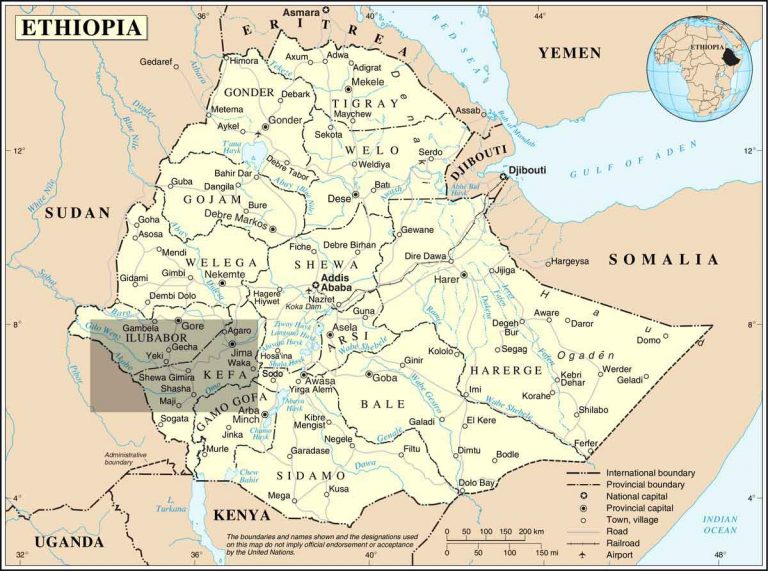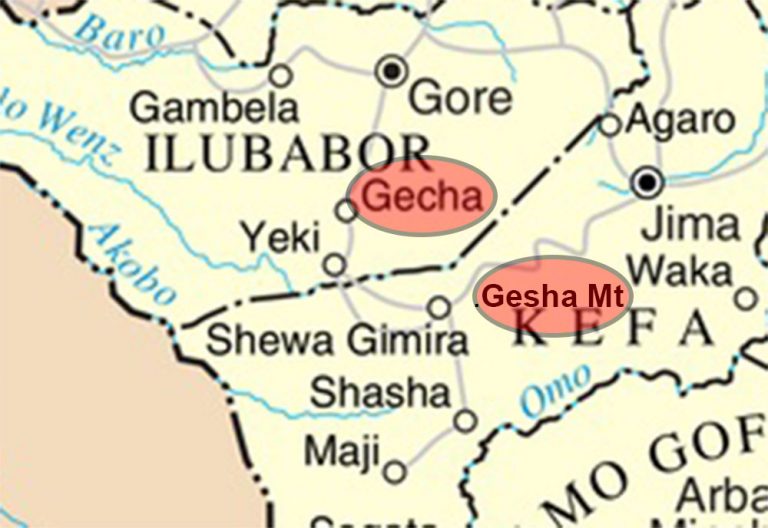What is Geisha coffee?
“Against popular belief, geisha coffee isn’t a single variety. It is a group of varieties who share a common place of origin; where T2722 (Panama Geisha) represents only one of them. Its success isn’t just a consequence of quality attributes but to geographic and socio-economic circumstances as well.”
I don’t think Geisha coffee needs much introduction; it’s balanced and delicate complexity of floral and fruity notes have made it barista’s favorite at international competitions for years, and news about Geisha coffee achieving record high prices, astonishing reviews and rocket high evaluation scores aren’t rare anymore.
With all the media attention and success, not only consumers have found Geisha coffee appealing and tempting but coffee farmers as well; who have seen the potential to become more competitive and profitable by adopting this new variety.
Although, betting on quality is something I personally recommend to all farmers, in this particular case I rather be cautious. It’s a singular variety with unique requirements that only few coffee farmers around the world could fulfill.
In this article I would try to summarize my concerns, and the circumstances beyond quality and taste that made Geisha coffee such an international phenomenon and success.
SEE ALSO: How can we help smallholder coffee farmers?
The Variety or should we better say varieties?
“Panama Geisha” is a variety logged as T2722, collected from the Ethiopian Kaffa forest during the 1930s and included in a collection at “Centro Agronómico Tropical de Investigación y Enseñanza” (CATIE) from Costa Rica in 1953, specifically for displaying tolerance to leaf rust. The variety was distributed all over Central America with no success among coffee farmers. Back then, it was considered too fragile, unable to adapt to low elevations, combine with low yields made it unsuitable for commercial purposes. However in the early 2000s the variety returned from oblivion at “Hacienda La Esmeralda” in Boquete Panama by the Peterson Family; who evaluated the variety’s profile and beverage quality for the first time ever. Regardless all its disadvantages as a cultivar, the variety managed to win all Panamanian quality contests it has participated on since, achieving notoriety and record high market prices worldwide. Today Panama Geisha ranks as the number one specialty coffee variety in the world.
Nevertheless, Geisha is also a town in the Kaffa region, southern west part of Ethiopia where Arabica coffee is indigenous from. At Kaffa forest, around ten thousand Arabica coffee varieties have been logged and it is assumed, at least ten thousand more are left to be discovered. These indigenous varieties are technically Geishas as well, although they have no relation with “Panama Geisha” T2722 whatsoever.


Consequently, the term Geisha comprises a full range of coffee varieties indigenous from Ethiopia’s Geisha area where “Panama Geisha” represents only one of them. Many of these varieties are currently growing and distributed around the world, though the name Geisha doesn’t necessarily mean they share any of the appealing attributes “Panama Geisha” T2722 is known for.
In conclusion, No one knows for sure how many Geisha indigenous varieties are currently being commercialized around the world as “Geishas”. However, it is undeniable that only one, the Panama Geisha” T2722 is the real deal.
Coffee farmers who receive coffee seeds from acquaintances, friends or visitors have no way to track the origin of the variety; assuming unwarily the risk of investing time, money and effort on an unproven heirloom variety with little to no probabilities of success.
Domestication
Geisha varieties have something in common, they are all heirloom varieties that have never been domesticated for commercial use. Domestication is a long and never ending process where farmers select individuals with specific traits they want to preserve and filter the ones they rather avoid. This artificial selection has been going on for centuries and it has allowed humanity to enjoy the high yielded, adaptable and pest resistant food crop varieties we enjoy today.
Growing an heirloom coffee variety is a challenge and not advisable for coffee farmers who depend on their crops for subsistence. The risk of failure is too high and unnecessary; farmers who depend so much on their crops should limit themselves to proven varieties with guarantee yields and resilience.
Coffee Processing
Specialty coffee processing has evolved considerably from traditional techniques where efficiency rate was only estimated by volume. Today, experimentation and sensory evaluation are essential decision making tools to tweak and tune a suitable coffee processing strategy. Before a farmer could benefit out of a high end exotic variety as Geisha he must master design, troubleshooting and implementation of specialty coffee processing techniques. The best coffees in the world require the most skillful and meticulous farmers as well.
SEE ALSO: What is the good, bad and ugly truth about washed coffee?
Panama’s terroir advantages
The Isthmus of Panama and Central America continent are among the newest masses of land on earth that emerged from the sea around 2.8 million years ago thanks to the CAVA (Central America Volcanic Arc). A network of volcanos that extend from the south of Mexico at the north to Panama at the south. These volcanos gave birth the entire continent and at the same time rewarded the land with the most nutrient-rich soils in the world today. Besides that, the continent has never experienced massive deforestation as it has happened in South East Asia or South America, making the area ideal for agriculture. Complemented with the high elevations found around Boquete (+1500 m.a.s.l) it makes the perfect setting for organic coffee farming.
Panama’s geographic location advantages
Although, Ethiopia’s coffee has the potential to match Panama Geisha Coffee in terms of quality. Ethiopia has no way to match the commercial advantages Panama geographic location provides. Panama has the highest maritime traffic in the world. The Panama channel offers exits to both, the Atlantic and Pacific Ocean, giving coffee farmers easy commercial access to any continent in the world. Moreover, the high container traffic allows the consolidation of small lots and fast and affordable shipping fees to anywhere in the world.
Panama’s social and economic advantages
Another reason for the overwhelming success of Panama Geisha coffee is the lack of a Panamanian coffee value chain. Most of Panamanian farmers enjoy vertical integration, where coffee production, processing, milling, exports and marketing are performed by coffee farmers themselves. Besides allowing them full control over coffee quality at all production and commercial stages, it allows them to concentrate the value added and at the same time avoid delays and bureaucracy most coffee farmers around the world cannot afford.
It is clear Geisha’s success wouldn’t be the same if the variety would have been rediscovered by different farmers in a different part of the world. However, as long as people keep supporting Specialty Coffee and the reward farmers receive for quality coffee keep increasing. I don’t think it would take long until a new variety makes a breakthrough and amaze the world once more.
We just need to keep working for the coffee industry we want rather the one we have.
